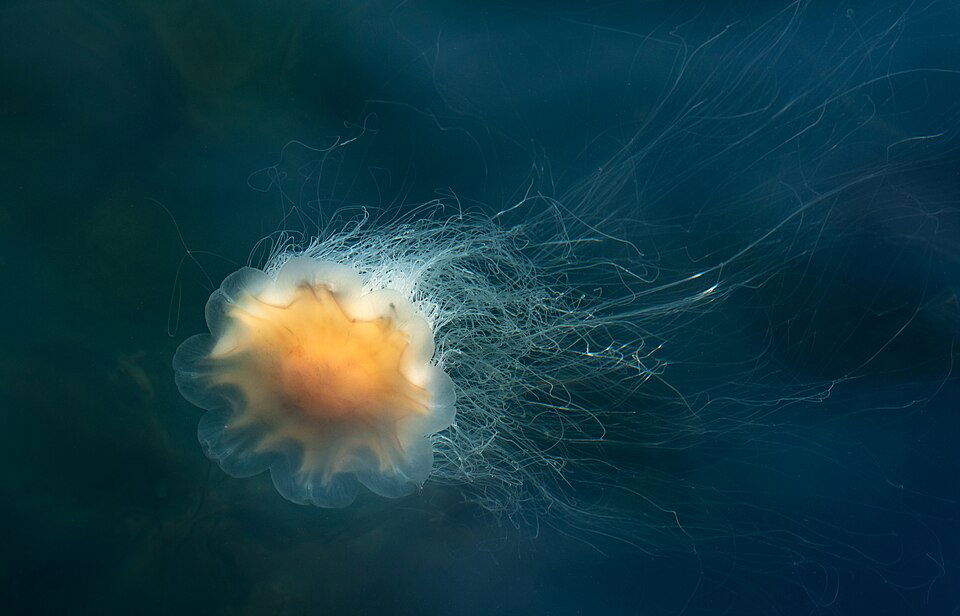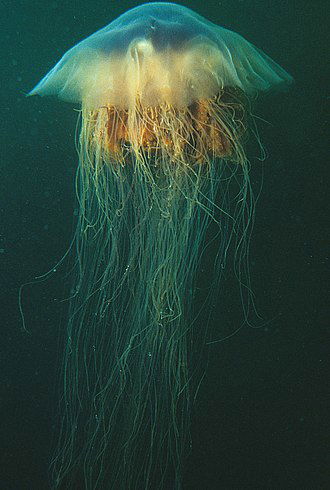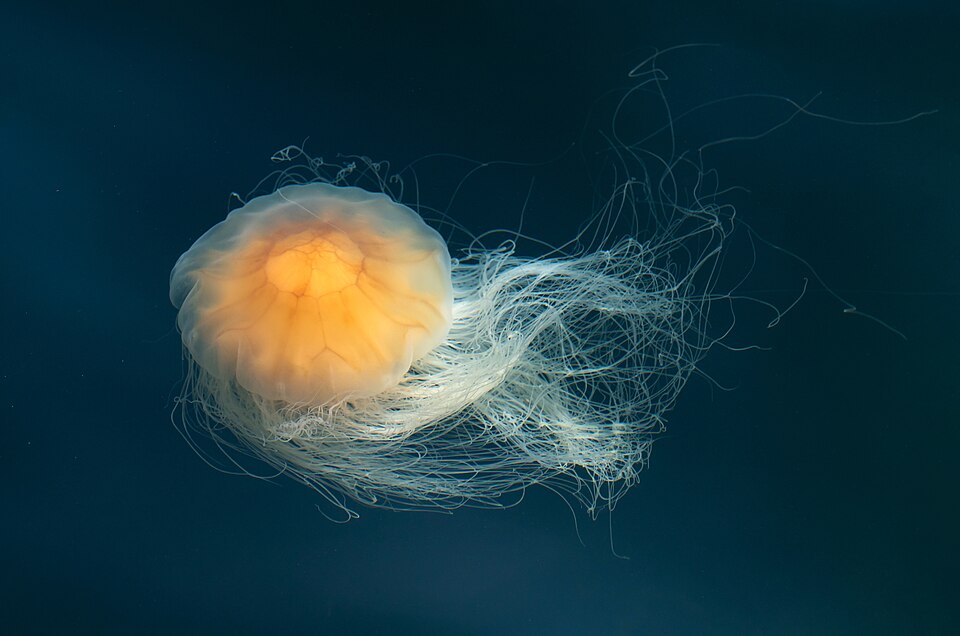Earlier this week, beachgoers in South Portland, Maine, came across an enormous lion’s mane jellyfish at Willard Beach. Measuring nearly five feet wide, larger than a typical beach umbrella, the jellyfish took locals by surprise. The city immediately posted a warning on Facebook urging residents and visitors to avoid touching the creature.
At around the same time, Ogunquit officials shared similar alerts. Lifeguards and beach staff reported a sudden rise in lion’s mane sightings and even moon jellyfish appearances in the waters. Both groups emphasized not to touch the jellyfish.
Understanding the Lion’s Mane Jellyfish

The lion’s mane jellyfish (Cyanea capillata) ranks among the largest jellyfish species in the world. While bell diameters typically reach three feet, the one found in Maine measured almost five feet, an exceptional size.
These jellyfish roam cold, northern waters, from the Arctic and North Atlantic to New England. They favor open ocean environments, so finding one on Maine’s shoreline is unusual.
Their trademark feature is the dense tangle of long, hair-like tentacles hanging from their bell. These tentacles contain thousands of stinging cells that can deliver painful stings to humans.
While most lion’s mane jellyfish stings are not life-threatening, they can cause severe pain, redness, swelling, and other symptoms, from nausea to breathing trouble, especially in allergic individuals.
When a jellyfish washes ashore, the tentacles can still sting, even if the animal appears lifeless. Officials strongly advise no contact and recommend alerting a lifeguard, who can safely guide the creature back to deeper water.
What to Do If You Encounter a Lion’s Mane Jellyfish

- Stay back. Do not touch the jellyfish, alive or dead.
- Alert beach personnel. Lifeguards should be informed to handle the situation.
- Watch from a distance. These animals are fascinating to see, but their tentacles are dangerous.
- Know how to treat stings. If someone is stung:
- Rinse with salt water or apply sand to neutralize tentacles.
- Do not use fresh water; it can worsen the sting.
- Seek medical help if symptoms are severe.
Lifeguards may suggest gentle scraping with a flat object, no rubbing, and medical evaluation if needed.
Lion’s mane jellyfish are driven toward shore by ocean currents and seasonal winds. They are most commonly seen near coastal areas in late summer and fall.
This recent appearance aligns with seasonal patterns. Shifts in water temperature, strong currents, or storms can carry creatures usually found offshore into shallow waters.
Climate variations may also be influencing their distribution. Scientists are studying whether changing ocean conditions are expanding their range along the East Coast.
They are truly giants of the sea. The Smithsonian confirmed they can have bell diameters up to 7 feet, with tentacles stretching over 100 feet; the largest recorded imprints have topped 120 feet, longer than a blue whale.
Most are smaller at lower latitudes, but the Maine specimen still rivals many suburban vehicles in size. The combination of bell width and tentacle reach can be startling to swimmers and beachcombers.
Lion’s mane jellyfish are native to colder northern waters but occasionally drift south along the U.S. East Coast. They are spotted in places like Massachusetts, New Hampshire, and farther south in the Chesapeake Bay.

This week’s beach sightings at Willard Beach and other Maine towns are rare but not unheard of. Officials in Massachusetts also issued alerts after sightings earlier this season.
Images of the huge jellyfish have gone viral online, especially on the city’s Facebook posts. People are both amazed and cautious; one viewer compared its appearance to famous hairdos.
Despite humorous comments, most messages emphasize safety and beach awareness. Many praised officials for fast alerts and clear instructions.
They aren’t out to hunt humans, but accidents can happen, especially with curious children or pets. Their stings hurt, and in rare cases, cause serious reactions. Educating beach visitors is key.
Officials say most encounters are harmless if people keep their distance. Just follow the simple steps: observe from afar, report it, and let trained personnel handle it.
Safety Tips for Beachgoers
- Know the look: reddish-orange bell, long, tangled skirt of tentacles
- Stay alert: Lifeguards are best placed to advise when jellyfish sightings increase
- Avoid touching beach-stranded jellyfish, dead or alive; they can still sting
- Educate kids: make sure children know to stay away and tell an adult
- Pack a first-aid kit: ready supplies like salt water rinse and a scraping tool help in case of stings
Being informed is your best protection, and Maine’s beaches remain a safe place to enjoy sea and sand when these basic guidelines are followed.
Maine depends on beach tourism. A few jellyfish sightings don’t threaten the season, but public concern can rise if not addressed properly. Officials are acting quickly: warnings are in place, and guidance is clear, so the public can enjoy the beaches with confidence.
The recent appearance of a giant lion’s mane jellyfish in Maine was both breathtaking and astonishing. While these creatures can sting and cause pain, following a few simple rules, don’t touch, notify experts, and stay informed, yields safe outcomes. It’s also a reminder of the ocean’s unpredictable, fascinating wild side.
Stay safe and enjoy Maine’s coastal beauty!
